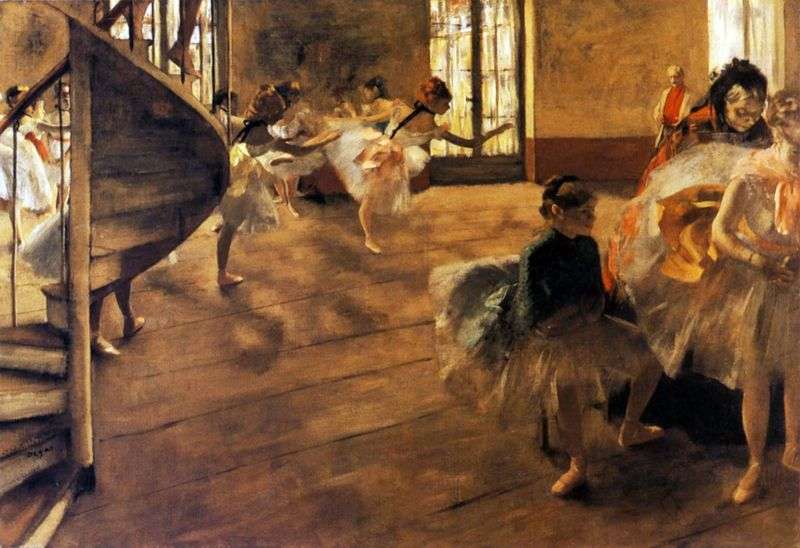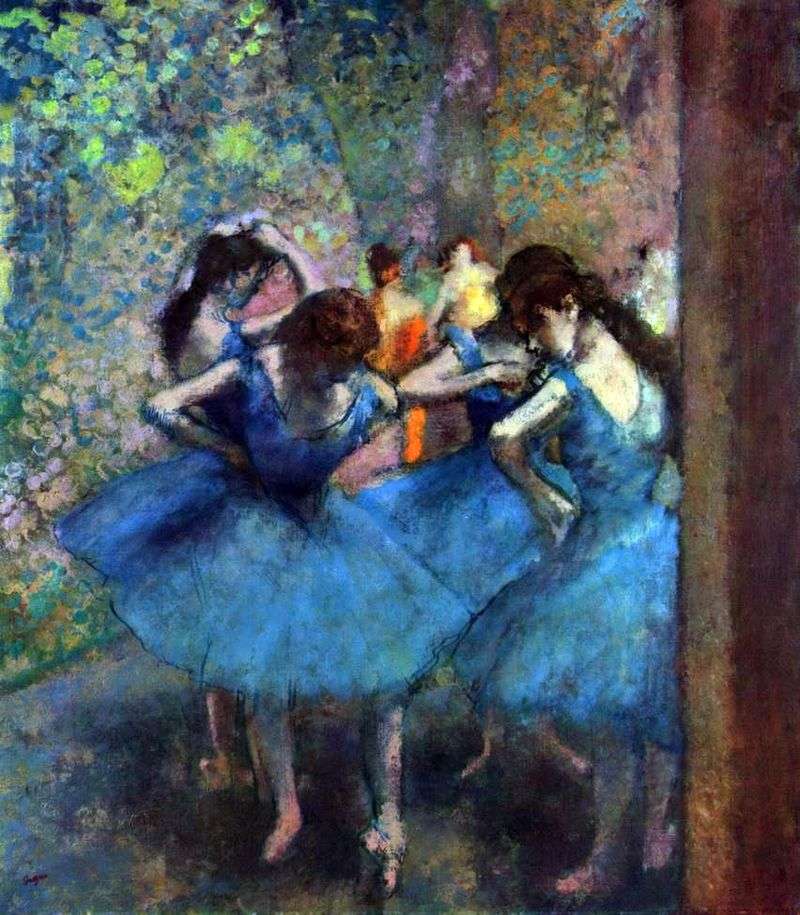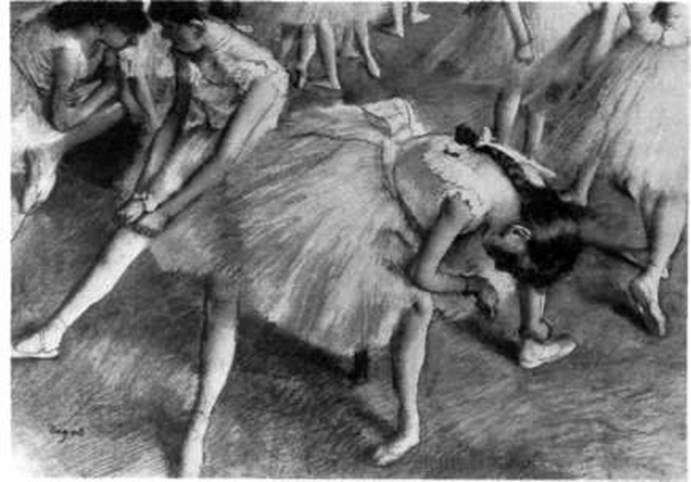
“Blue dancers” are considered a real masterpiece, they also belong to the period of Degas’ creative work, when he depicted the half-naked figures of ballerinas, lit by a sharp light. This picture shows the play that has already ended, the end of the theatrical performance. The ray of the theater spotlight for a moment snatches the figures of the ballerinas from the darkness, the light enlivens the drawing, forcing the figures to move. It is noteworthy that Degas does not paint the air with light, the whole action is enclosed in a special environment of the theatrical scene.
Four dancers in the picture form an inseparable whole, conveying the idea of a harmonious, harmonious and evolving movement with their plasticity. It’s hard to even tell if four ballerinas are pictured on the canvas. It can be a figure of the same dancer, but in different corners.
In the late 1900 – early 1910 Edgar Degas switched from painting to sculpture. He portrayed figures of horses, bathers, ballerinas. In his sculptures, Degas also sought expressive transmission of instantaneous movement, sharpness and surprise of the pose and at the same time was able to maintain the plasticity and integrity of the figures.
Degas sets himself an impossible task, trying to find the impossible balance and harmony of characters, and directs all the power of his talent to their decision. In his early notebooks he wrote: “It is necessary to learn how to memorize forms and expressions and never draw or write directly from nature.” This principle of Degas remained true until the end of his life.
In mature years, the artist began to develop a serious eye disease, but this did not prevent him from enjoying the colors of life in New Orleans. Degas wrote about America: “Sunlight is so strong here that I could not write anything on the river yet.”
Since 1891 Degas completely fenced off from the outside world, does not even read newspapers. He absorbs the beauty of nature and lives with his old thoughts. Degas turned out to be a wonderful pupil of the old masters, who believed that the most important thing was “to master and manage to convey the prevailing one on which the harmony of the picture is based.”
 Blue Dancers by Edgar Degas
Blue Dancers by Edgar Degas Two dancers by Edgar Degas
Two dancers by Edgar Degas Four dancers by Edgar Degas
Four dancers by Edgar Degas Rehearsal by Edgar Degas
Rehearsal by Edgar Degas Dance class (Dance lesson) by Edgar Degas
Dance class (Dance lesson) by Edgar Degas Dancers at rehearsals by Edgar Degas
Dancers at rehearsals by Edgar Degas In anticipation of entering the stage by Edgar Degas
In anticipation of entering the stage by Edgar Degas Star by Edgar Degas
Star by Edgar Degas